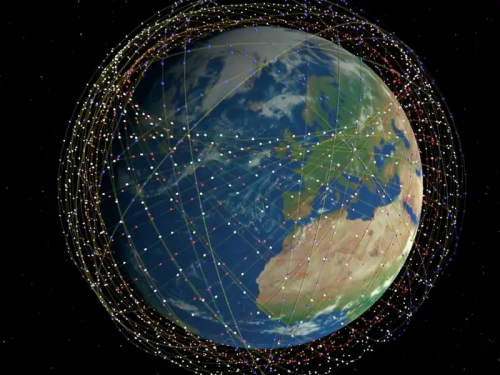The future of global connectivity is no longer being built on the ground—it’s being launched into space. Elon Musk’s Starlink project, developed by SpaceX, is rewriting the rules of internet access with one of the most ambitious satellite networks ever conceived. With more than 12,000 satellites planned—and thousands already in orbit—Starlink aims to create a vast digital mesh that blankets the entire planet.
Designed to deliver ultra-fast, low-latency internet, Starlink targets regions that traditional broadband has long ignored: remote villages, rural landscapes, deserts, mountains, ships at sea, and even aircraft in flight. Areas that once struggled with limited connectivity now stand at the edge of a technological transformation.
Each satellite, positioned in low-Earth orbit, communicates with ground terminals using advanced phased-array antennas. This allows Starlink to provide speeds rivaling fiber-optic networks while dramatically reducing the lag typically associated with satellite connections. As the constellation grows, so does its performance—bringing reliable service even to countries with challenging geography or underdeveloped infrastructure.
Tech analysts say Starlink’s global reach could reshape economies, education, emergency response, and even national communication networks. From enabling online learning in remote regions to providing instant connectivity during natural disasters, the system is proving to be a lifeline in many parts of the world.
Governments, businesses, and communities across continents are joining the wave, describing Starlink as a breakthrough that bridges the digital divide and empowers millions with access to information. With the constellation expanding rapidly, the internet revolution is not just on the horizon—it is already orbiting above us.
As Starlink moves closer to full global coverage, one thing is clear: the sky is no longer the limit—it’s the infrastructure.







